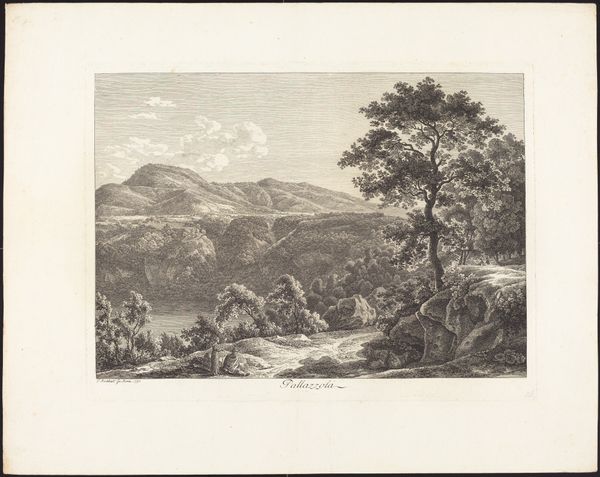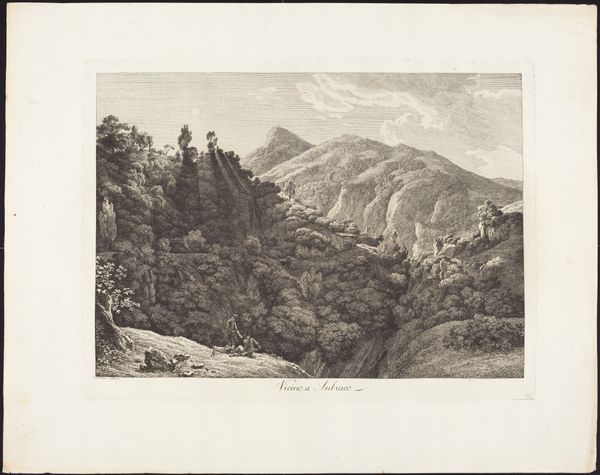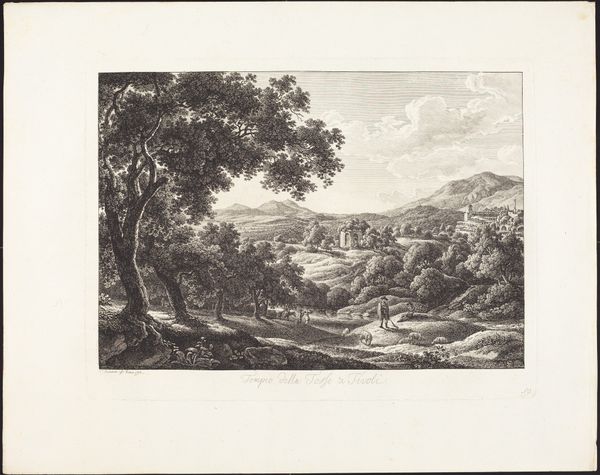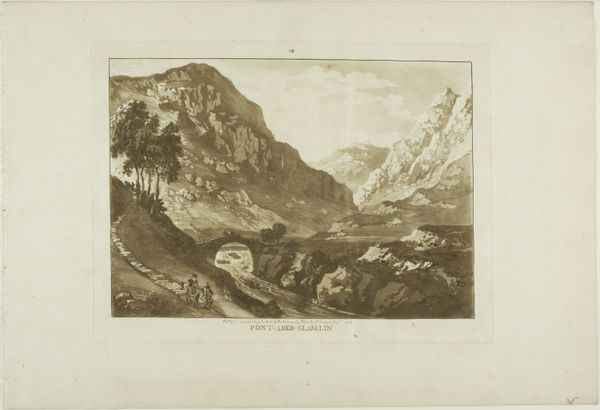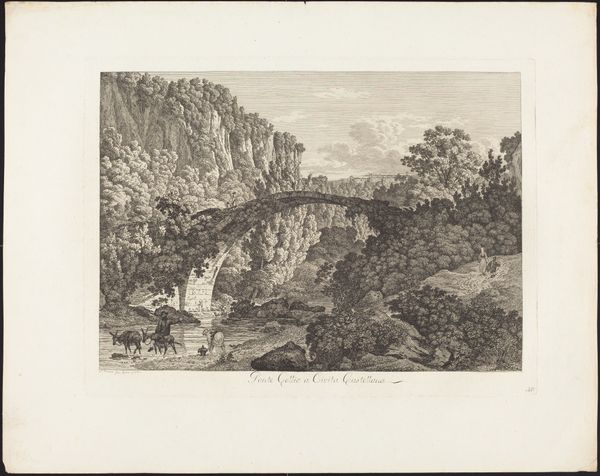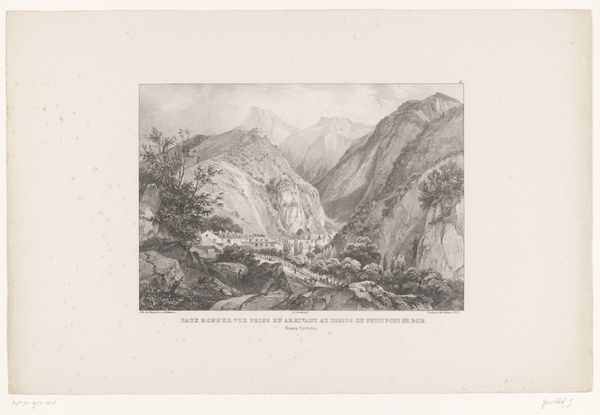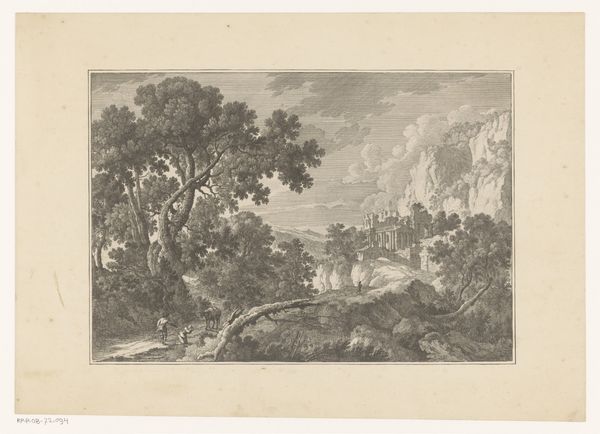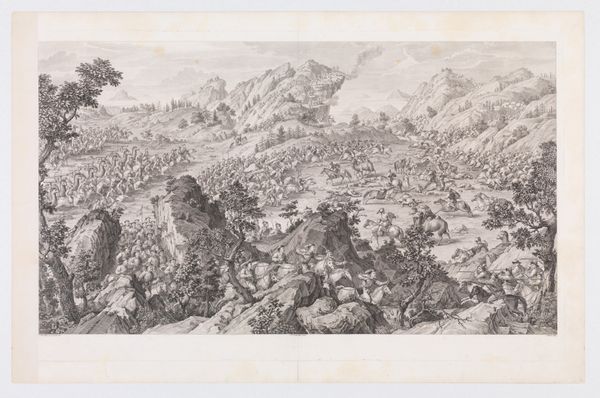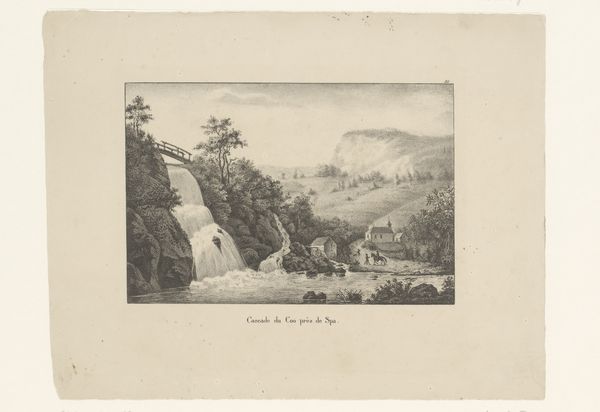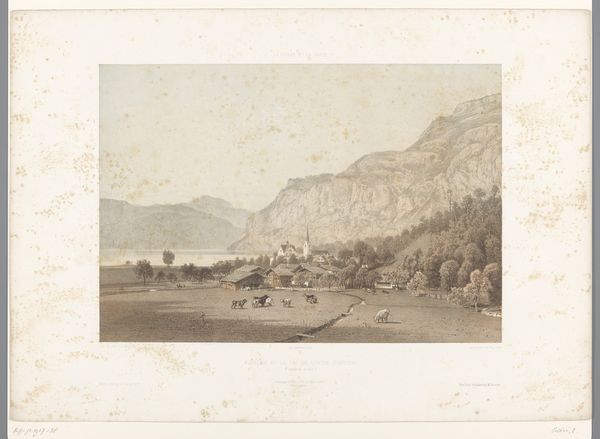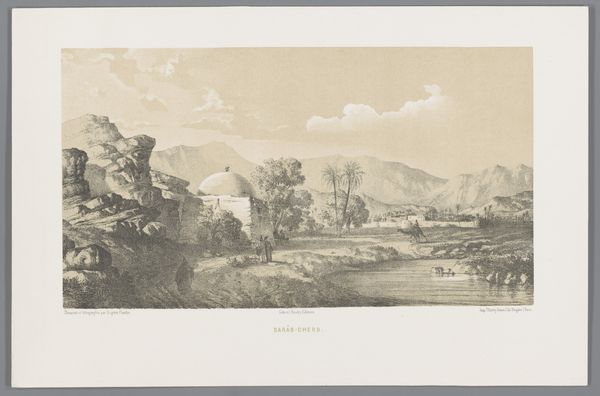
Al pié del monte Catillo, detto monte della Croce a Tivoli 1793
0:00
0:00
print, etching
# print
#
etching
#
landscape
#
romanticism
Dimensions: plate: 28.5 x 38 cm (11 1/4 x 14 15/16 in.) sheet: 39.2 x 49.2 cm (15 7/16 x 19 3/8 in.)
Copyright: National Gallery of Art: CC0 1.0
Curator: Before us, we have Albert Christoph Dies' "At the Foot of Mount Catillo, Called Mount of the Cross at Tivoli," an etching from 1793. Editor: The monochrome gives it an interesting antique quality. I get a palpable sense of depth in the hills and cascading falls, although the whole scene has a somber mood. Curator: Dies masterfully employs the etching technique to create intricate textures. See how the varied line work suggests light filtering through the leaves and across the craggy terrain? Note the symbolism associated with the landscape—mountains, valleys, and water often symbolize spiritual journeys or challenges. In romanticism they frequently stood in as a representation of the self. Editor: That romantic symbolism is potent. But whose "self"? What kind of journey are we talking about when the artist centers a specifically Italian, and presumably upper-class experience, perhaps one divorced from the struggles of those who toiled to maintain such leisure? Curator: It is easy to look to art from this era as nostalgic, but in some traditions of landscape, you often see reflections on mortality. Here we could find emblems of resilience. The etching's starkness underscores nature's powerful force. Think also of the Christian implications of the name "Mount of the Cross," suggesting a site of penance. Editor: Yes, the religious implications are unavoidable and should not be flattened. Still, I'm wary of any imagery that obscures the broader sociopolitical context. How does the romantic portrayal of "untouched" nature erase indigenous or peasant claims to that space, especially under early capitalistic expansions? I am immediately put on edge looking at art with themes that privilege the natural, but where we lack understanding or consideration of marginalized realities. Curator: Fair. It is key to think about who is being left out and who has had access in history. Reflecting on it with fresh eyes, this does appear to function like a visual record for a select elite. We have arrived at a place of recognizing its nuances! Editor: Exactly. It is vital to understand both its appeal and its potentially problematic perspectives. The stark quality helps foreground historical questions that can prompt conversation about inequitable visual access and ownership in art historical legacies.
Comments
No comments
Be the first to comment and join the conversation on the ultimate creative platform.
